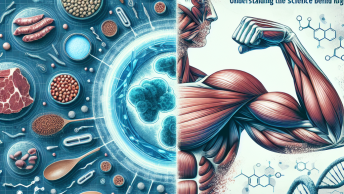Intermittent fasting (IF) has become a popular trend in the wellness world. It’s more than just a diet; it’s a lifestyle choice that many individuals adopt for various benefits, including fat loss. If you’re curious about how intermittent fasting can help you shed those pounds, you’ve come to the right place. In this article, we will break down the critical aspects of intermittent fasting and how it can assist with fat loss.
1. Understanding Intermittent Fasting
Intermittent fasting is an eating pattern that alternates between periods of fasting and eating. It doesn’t specify what foods you should eat but rather when you should eat them. By limiting your food intake to specific windows, you may naturally reduce your caloric intake without the need to explicitly count calories.
2. The Science Behind Fat Loss
When you fast, your body undergoes several changes. During fasting, insulin levels drop, and fat cells begin to release stored fat. Your body then converts this fat into energy, effectively promoting fat loss. It’s a simple yet effective way to leverage your biological processes for weight management.
3. Different Methods of Intermittent Fasting
There are various methods of intermittent fasting, allowing flexibility based on individual preferences. Some popular methods include:
- 16/8 Method: Fast for 16 hours, eat for 8 hours.
- 5:2 Diet: Eat normally for five days, limit calorie intake to 500-600 calories for two non-consecutive days.
- Eat-Stop-Eat: Fast for 24 hours once or twice a week.
Choosing a method that fits your lifestyle is essential to maintaining consistency.
4. Benefits Beyond Fat Loss
While fat loss is a significant benefit, intermittent fasting provides several other health advantages, including:
- Improved Insulin Sensitivity: Lower insulin levels can aid in fat burning.
- Increased Human Growth Hormone (HGH): Fasting promotes the release of HGH, which plays a role in fat loss and muscle gain.
- Cellular Repair Processes: During fasting, your body initiates autophagy, a process that removes damaged cells and supports overall health.
5. Making It Sustainable
Sticking to an intermittent fasting plan can be challenging at first, especially if you’re used to eating regularly throughout the day. Here are some tips to make it more sustainable:
- Stay hydrated: Drink plenty of water, herbal teas, or black coffee to stave off hunger.
- Gradually adjust your eating window: Start with a smaller fasting window and gradually increase it.
- Listen to your body: If you’re feeling dizzy or unwell, break your fast.
6. Nutrition During Eating Windows
When consuming meals during your eating periods, focus on nutrition. Quality matters! Prioritize whole foods like fruits, vegetables, lean proteins, and healthy fats. This combination helps ensure that your body receives the necessary nutrients while promoting fat loss.
7. Incorporating Exercise
Intermittent fasting can be enhanced by integrating exercise into your routine. Studies show that working out in a fasted state can increase fat oxidation and improve insulin sensitivity. However, it’s crucial to recognize your energy levels. You may want to experiment with various workout times to find what feels best for you.
8. Common Mistakes to Avoid
When embarking on an intermittent fasting journey, being mindful of potential pitfalls can make a significant difference in your results. Here are some common mistakes to watch out for:
- Overcompensating during eating windows: Just because you’re in an eating phase doesn’t mean you should eat whatever and however much you want.
- Neglecting hydration: Fasting doesn’t mean you shouldn’t drink water or calorie-free beverages.
- Expecting overnight results: Fat loss takes time and consistency. Be patient with the process.
9. Understanding Your Body’s Signals
Everyone’s body responds differently to fasting. It’s essential to be mindful of how your body reacts during fasting and eating windows. Keep track of your energy levels, mood, and any physical symptoms. Adjust your approach based on these signals; intermittent fasting is not one-size-fits-all.
10. Looking for Guidance?
If you’re interested in exploring more about intermittent fasting and how it can help you achieve your fat loss goals, you don’t have to go it alone. Click Here to learn more about effective strategies and plans tailored for various lifestyles. Whether you’re a beginner or seasoned faster, this comprehensive guide can help you navigate your journey with ease.
Conclusion
Intermittent fasting is more than just a trend; it’s backed by research and a myriad of success stories. It offers effective strategies for fat loss and overall health improvement. As with any lifestyle change, it’s essential to do your research, listen to your body, and make adjustments as needed. By understanding the fundamental principles of intermittent fasting, you can embark on a transformative journey toward better health and wellness.
Whether you’re trying to lose weight, enhance your health, or develop a sustainable eating pattern, intermittent fasting may be an effective approach for you. Make sure to approach it mindfully and see the benefits unfold!






